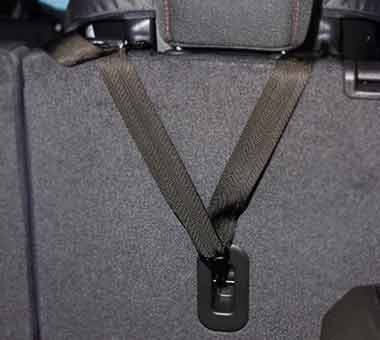LATCH
The LATCH evaluation assesses how easy it is to install a child restraint using the test vehicle’s system of mandatory attachment hardware, known as Lower Anchors and Tethers for Children (LATCH). Child restraints can be installed correctly using vehicle seat belts, but LATCH is intended to make the process simpler.


How vehicles are evaluated
- Lower anchors are evaluated for accessibility, clearance angle and the force required to use them. They should not be buried too deep in the base of the seat or positioned without adequate room to maneuver around. It should not require too much force to attach the lower connecter of the child restraint.
- Top tethers should be located on the rear deck or within the top 85% of the seatback or within 24 inches of the top. They should not be on the very bottom of the seat or on the vehicle’s floor or ceiling. If other hardware is located near the tether anchor, it should be labeled clearly.



- Ratings are awarded based on the number of LATCH positions that are easy to find and use. A poor rating does not mean the LATCH connectors are unsafe, only that child restraint installation will be more difficult in that vehicle.
- To earn a good rating, a vehicle must meet LATCH criteria in two seating positions. If there are more than two rear seating positions, a third tether anchor is also required. (Tether anchors are needed to use forward-facing child restraints even when seat belts are being used in place of lower anchors.)
- While most of our evaluations have a top rating of good, vehicles can earn a rating of good+ for LATCH. Vehicles with the “plus” have an additional LATCH seating position, and, in the case of three-row vehicles, tether anchors in all seating positions.
LATCH test protocol and technical information
For details on other tests we conduct, visit the About our tests page.